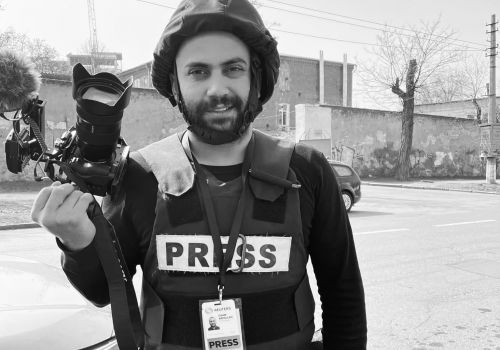Questions reporters and editors should ask to diversify their sources
2022-05-29 12:09

Diversity in sourcing quite simply makes our journalism better. More reflective of our world. And more accessible.
Six months ago, I took on a new job: editor of The Washington Post’s Next Generation team. We’re a cross-functional team dedicated to helping the whole company reach younger and more diverse audiences, and hopefully convincing them that our work is worth subscribing to.
It’s a first-of-its-kind team at The Post, but the challenge of finding new audiences is one faced by the whole industry.
As the editor, I’m focused on helping our journalists across the newsroom connect their critical, authoritative reporting to new audiences. One of the first things I heard from reporters and editors I spoke to around the room was that they wanted tangible tips they could start using now — ways to implement this big, important goal of reaching younger and more diverse audiences in their daily work.
That’s what led me to putting together what I have been calling the “source course,” aimed at helping editors and reporters think strategically about how we report out every single story. It’s something I care deeply about, and believe is a fundamental step in gaining the trust of the audiences we aren’t yet reaching.
One of our first steps as a team was to conduct research into what younger audiences wanted from news organizations. And our reader research is clear: Diversity in sourcing is key to reaching and retaining a younger, more diverse set of readers. Younger audiences want to see their experiences and the experiences of their peers reflected in the journalism they consume. They want to see how policy affects the lives of everyday people. And they want to feel personally connected to what they read.
Diverse sourcing makes us more trustworthy arbiters of the news. In a 2020 study from the Center for Media Engagement at the University of Texas in Austin, participants said coverage of Black communities was “one-sided” and “lacked nuance,” and that while Black Americans trusted journalists in general, they did not trust journalists to cover Black communities. A 2021 study from the Reuters Institute shows that younger people have a strong interest in coverage that is clearly more diverse and inclusive, with an emphasis on “human, personal and real stories.”
So yes, the research is clear, but most importantly, diversity in sourcing quite simply makes our journalism better. More reflective of our world. And more accessible.
Diversity can look like and mean a lot of different things based on the story: race and ethnicity, gender, age, geographic location, perspective, sexual orientation or economic background. When I launched a course on this for editors at The Post, I wanted to create clear takeaways, a set of five questions that they can ask themselves with each story they launch.
In our effort to meet communities, this can feel like a long game, but it’s also where reporters on the ground have the most power to change the way their newsrooms are doing the work. It’s also a space in which, when given the time and space to build out their efforts, they have a lot to gain — their stories will be more accurate and ultimately, appeal to a broader, more loyal audience.
Here are those five questions:
Are we including the voices of the people most affected by what’s happening?
And more importantly, how are those voices being elevated and prioritized throughout the story? How are we showing the impact of the news? In a story about rising rent prices, are we including the people who are being pushed out of their homes, or just focusing on policy?
How are we defining “experts” in this story?
Think beyond just credentials on a resume. Lived experience can and should qualify as an expert voice. We may feel limited sometimes by the lack of diversity in academia or at think tanks when we seek expert voices, for example, but it’s up to us to shift our definition. Take this story on long COVID patients. Especially in a coverage area where there is so much that remains unknown, this story gives the same treatment to the patient experience and the voices of health care professionals.
Are we engaging with a diverse range of sources, even when the story isn’t explicitly about marginalized groups?
In short, are we prioritizing this for every story — stories that have nothing to do with diversity or race or sexual orientation — and making sure that the voices of marginalized communities are heard from in stories about love, friendship, whimsy and plain old life, too? This story on the experiences of women living alone in the pandemic intentionally showcases a diverse range of voices and ages to tell as full of a story as possible.
Are we making assumptions about our readers?
Ensuring we hear from a diverse range of voices helps us avoid falling into traps. As we have seen over the last few years, the default for terms like “suburban mom,” “working class” or “evangelical” has too often simply meant white people. We can stop this kind of coding. Black, Asian, Native American and Latinx voices should have a presence in these stories.
How are we explaining our process to sources?
People who don’t work in journalism don’t always know the difference between being on the record versus off the record. They may not realize where exactly their quote will show up, or that they may not even appear in the final story. Taking a few moments at the start of an interview to explain some fundamentals creates trust in our process and prevents us from burning bridges with sources.
***
There are longer-term goals, too, of course. Doing something like a source audit, where you go through each of your sources and identify them by certain characteristics — race, gender, etc. — and compare the makeup to your audience, might feel like it will take up a lot of time and resources your team or newsroom doesn’t have. Instead, pick a sample size, narrowing it down to a monthlong time period or a specific line of coverage, and do a mini source audit — who are you overindexing on? Who do you need to hear more from? What gaps in coverage stand out when you step back for a moment? Doing this twice a year will make a difference.
Creating the space to build out a source database is key, too. It helps in breaking news moments to have already created a foundation to reach a broader mix of sources. If you or your reporters don’t know where to start, Editors of Color created a whole database of diverse databases.
And finally, for editors, don’t be afraid to send back a story if you aren’t happy with the mix of sources. Ask yourself: Who is the story by, who is it about and who is it for? If we don’t include a diverse range of voices we are narrowing those lanes and not reflecting the world we should be covering.
We owe this work to our readers, the people who trust us to share the news with them every day. And the readers who we haven’t reached yet, because they don’t trust us, or don’t see themselves reflected in the news — we owe it to them most of all.









